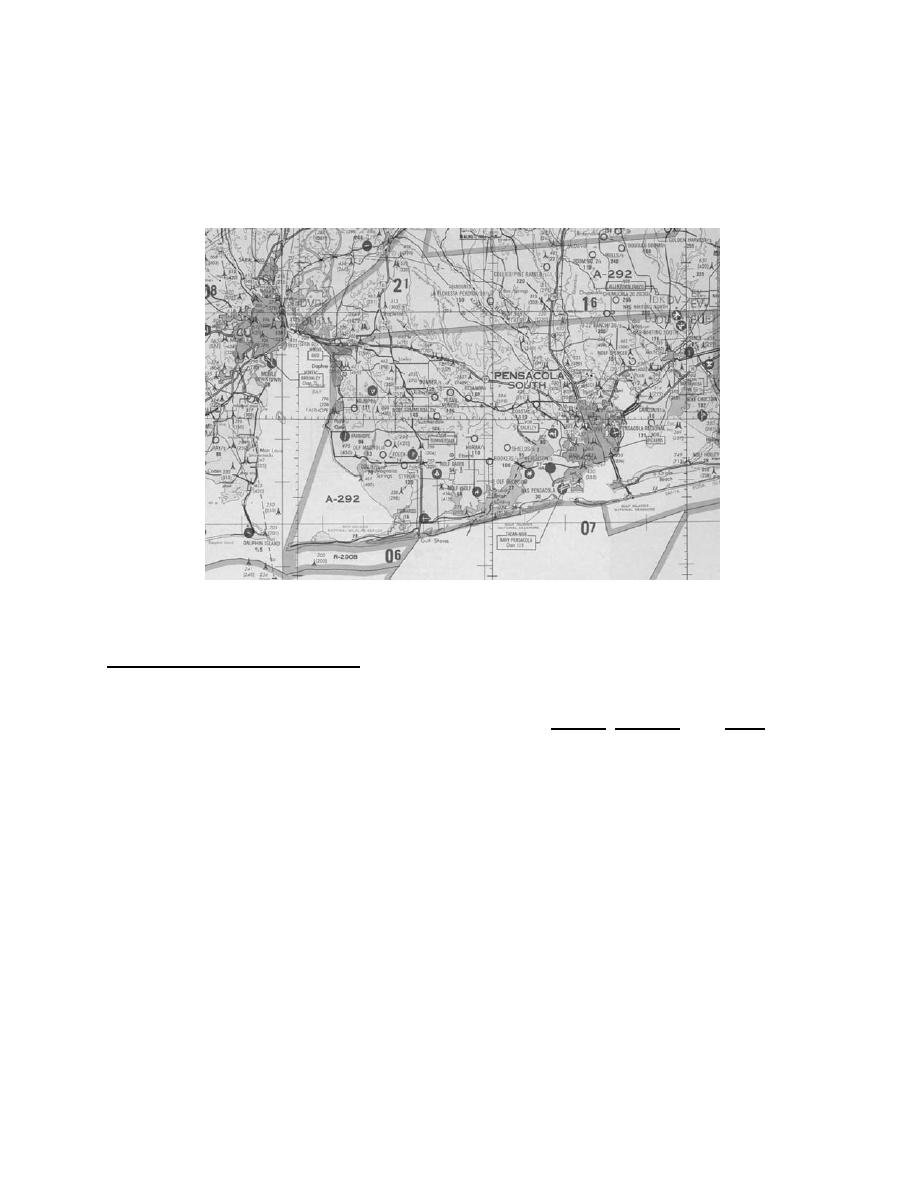 |
|||
|
|
|||
|
|
|||
| ||||||||||
|
|  There are other chart projections available such as the Mercator, a cylindrical chart
projection which uses a cylinder rather than a cone as its developable surface. However,
the disadvantages of this projection (such as variable distance scales and curved great
circle routes) make it awkward for aviation navigation purposes; therefore, it is used less
frequently.
Figure 4.2-4 TPC Chart
COURSE / HEADING / TRACK
Lesson Topic 4.1 introduced direction as one of the four components of DR navigation.
Direction can be further defined by three related terms: course, heading, and track.
Additionally, course and heading can be expressed as true or magnetic, depending on
whether True North or Magnetic North is used as the reference.
Course is the aircraft's intended flight path. When a straight line is drawn from departure
point to destination on a Lambert conformal chart (oriented to True North), the "True
Course" (abbreviated TC), is plotted. Figure 4.2-5 shows and intended flight from the
Mobile TACAN to the Whiting Field TACAN.
Technically, heading is the angular distance of the aircraft's longitudinal axis from a
reference (typically True North or Magnetic North). Generally speaking, heading is direction
the nose of the aircraft is pointed. Figure 4.2-6 shows how True Heading is determined.
The heading of the aircraft will differ from the course in order to compensate for
crosswinds. Lesson Topic 4.5 covers wind in detail.
4.6-24
|
|
Privacy Statement - Press Release - Copyright Information. - Contact Us |